Going backwards – the Hornby 52xx
I recently acquired one of Hornby’s 52xx tank engines to add to my fleet of ex GWR heavy good engines.
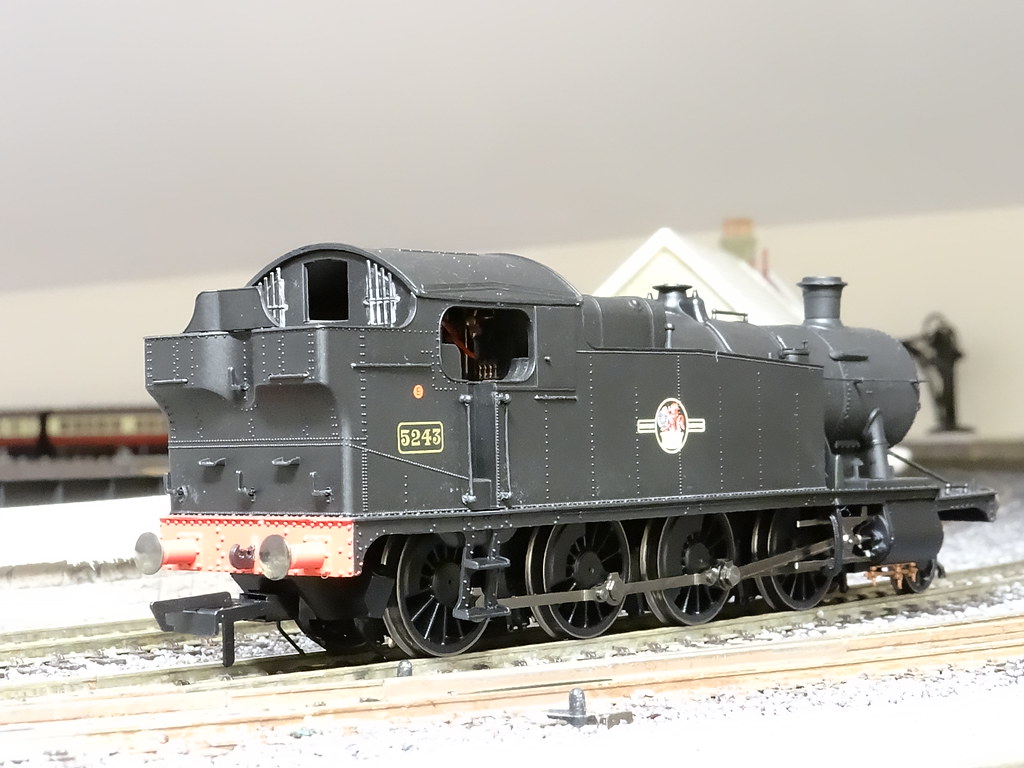
Hornby 52xx Going Backwards
It is a good looking engine with some very fine detail. It runs forwards and backwards very smoothly albeit at a prototypical slow speed. I had to take my glasses off to study the handrails round the bunker – and yes they are individual wires! I like the full set of brackets on the rear of the bunker visible when using the engine in reverse. However the footplate on my model is not completely straight – possibly like the prototype! The footplate appears to be locked to the bunker and side tanks by around eight plastic lugs – I can see me investigating further – but it all looks very delicate!
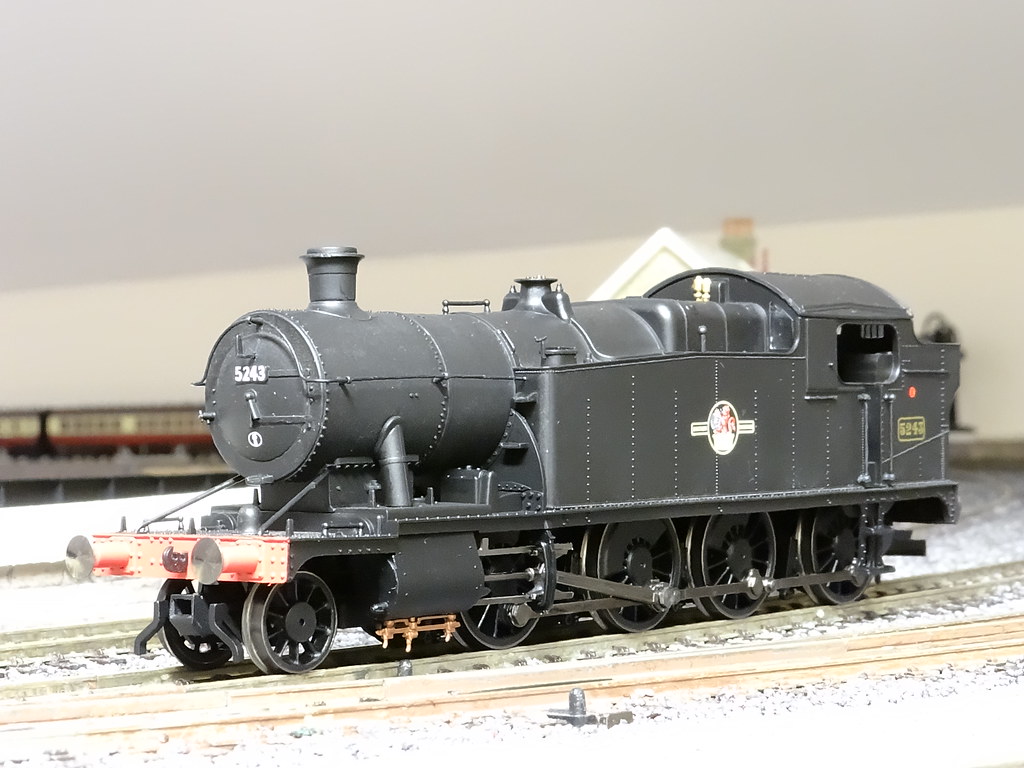
Hornby 52xx Going Forwards
I do sometimes buy things on impulse. I had been impressed by the preproduction pictures of the model. However I did not keep up with more recent correspondence and it came as a surprise to me to find that the smokebox handles were moulded with the door, and that the buffers were not sprung.
For comparison I have pictured my new Hornby 52xx alongside some of my other ex GWR engines.
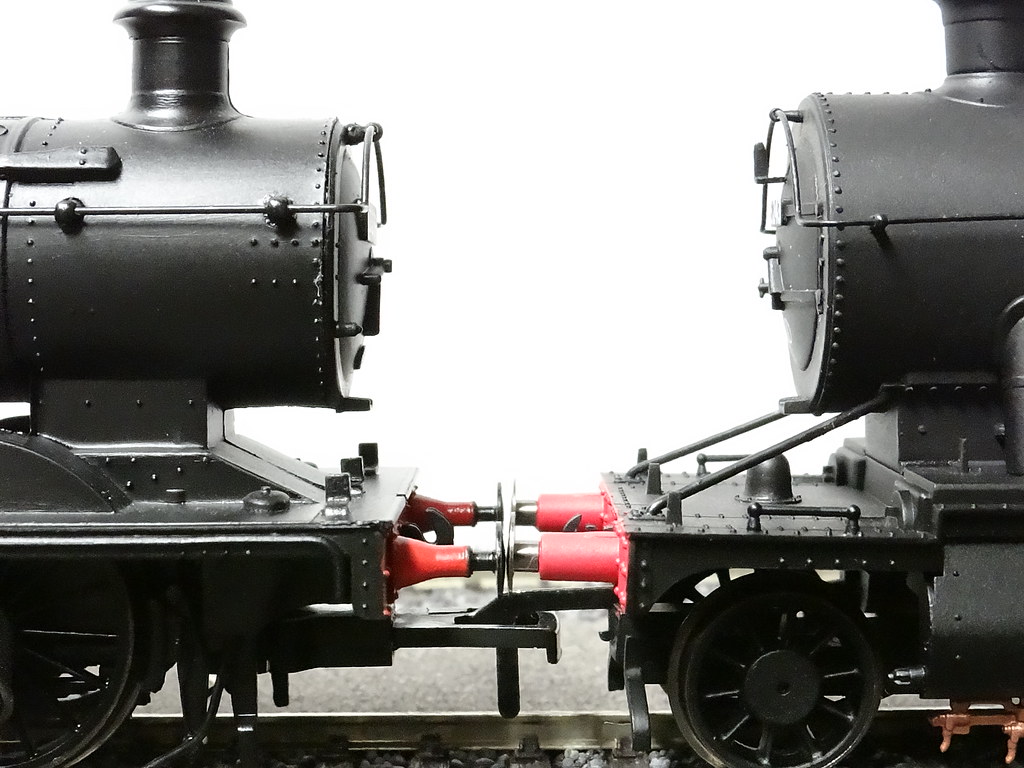
Bachmann 22xx (ROD) versus Hornby 52xx
The Bachmann 22xx model dates back to Mainline times and I think I am correct when I say that even the latest DC ready variants still have the smokebox handles moulded integrally with the door. The detail on the 22xx is robust and the door handles appear to me to be over heavy.

Bachmann 43xx (Split chassis model) versus Hornby 52xx
One of my all time favourite engines is the 43xx Class. Again the Bachmann model is getting to be dated. The lamp irons are robust but the door handles are quite realistic, the top one being a separate moulding to the bottom one, which is still integral with the door.

Bachmann St Edmund’s Hall versus Hornby 52xx
The Bachmann model of St Edmund’s Hall is one of the newer models and continues to use a separate moulding for the top handle. The lamp irons might be regarded as over heavy?
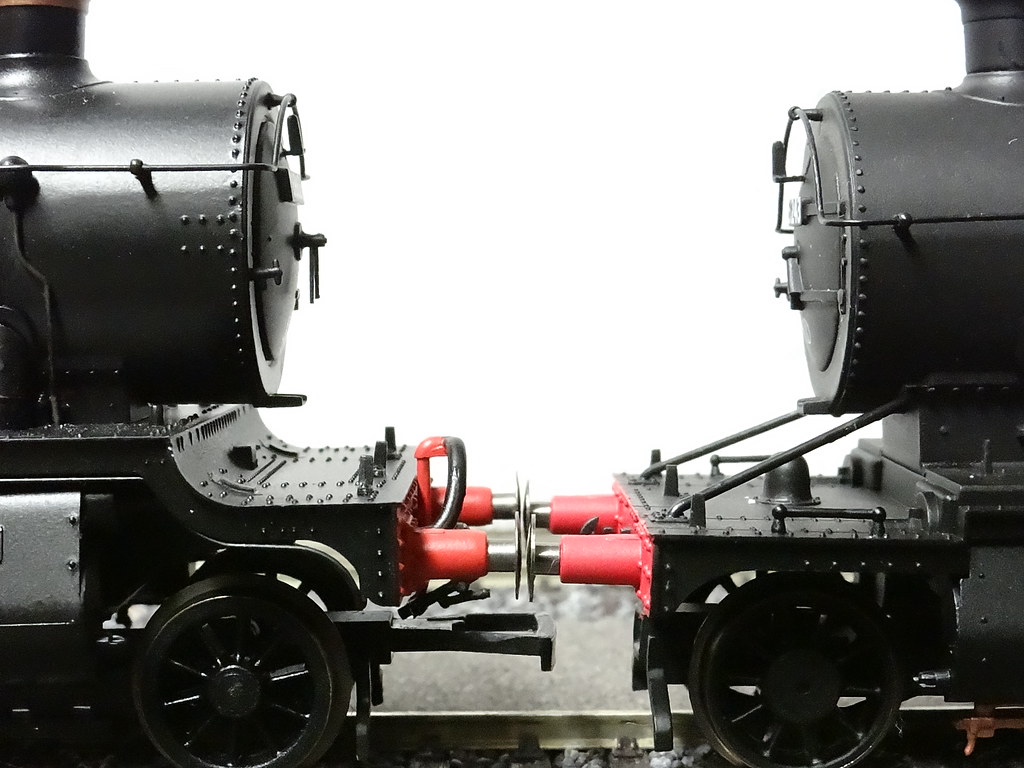
Hornby Derwent Grange versus Hornby 52xx
The Hornby Derwent Grange model is getting to be a little dated but its introduction seemed to me to mark the start of some very good super detailed models. The smoke box handles were a completely separate moulding which did on occasions ‘go walkabouts’. I did even wonder if the handles were too thin!
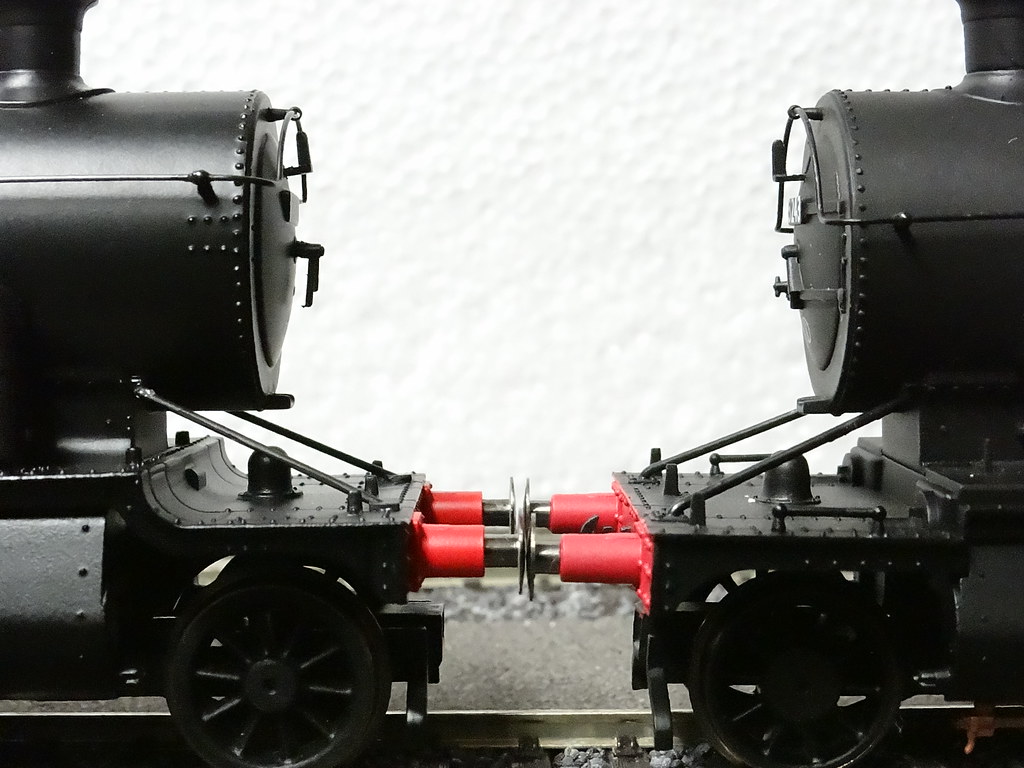
Hornby 28xx versus Hornby 52xx
My personal view is that the Hornby 28xx model marks a high spot in both detail and performance. I think the smoke box handles and the lamp irons are all about perfect.
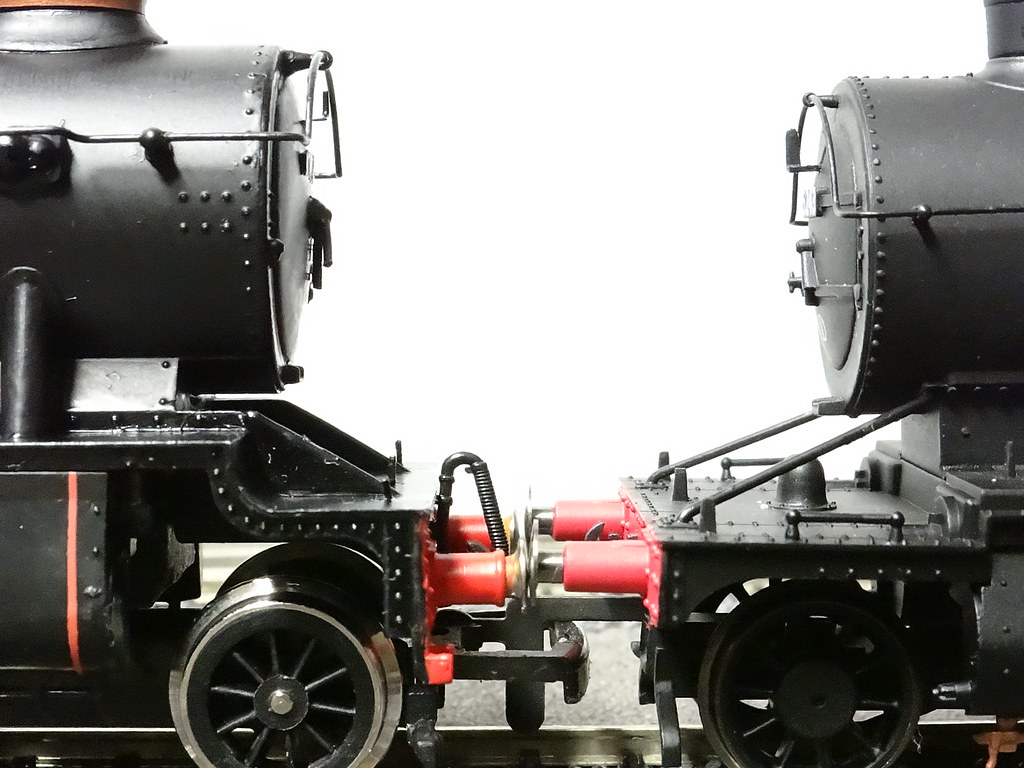
Dapol County (with added detail) versus Hornby 52xx
Readers of this Blog will remember that I recently posted an item on fitting wire smokebox handles to the old Dapol County. (I also fitted lamp irons, sprung buffers, cab glazing and etched plates.) In the view above I think the improved Dapol model compares very well with the latest Hornby offering.

Dapol County with added detail.
I have been most impressed with the Hornby 28xx model and I must admit to feeling slightly cheated with the 52xx. Hornby in my opinion have taken a step backwards with their detailing. We know that our chocolate bars and our biscuits are all getting smaller as the prices go up, so perhaps we should not be surprised that Hornby have started to back track on expensive detail. It is quite fun and cost effective to add detail to the old Airfix, Mainline and early Dapol models – like my Dapol County. However I am not so happy at the idea of purchasing sprung buffers and spending time on adding proper smokebox handles to a model costing around £100.
-
 1
1


.thumb.jpg.60c53fcbcaa34017b05b8919d1a9e6d2.jpg)

12 Comments
Recommended Comments
Create an account or sign in to comment
You need to be a member in order to leave a comment
Create an account
Sign up for a new account in our community. It's easy!
Register a new accountSign in
Already have an account? Sign in here.
Sign In Now